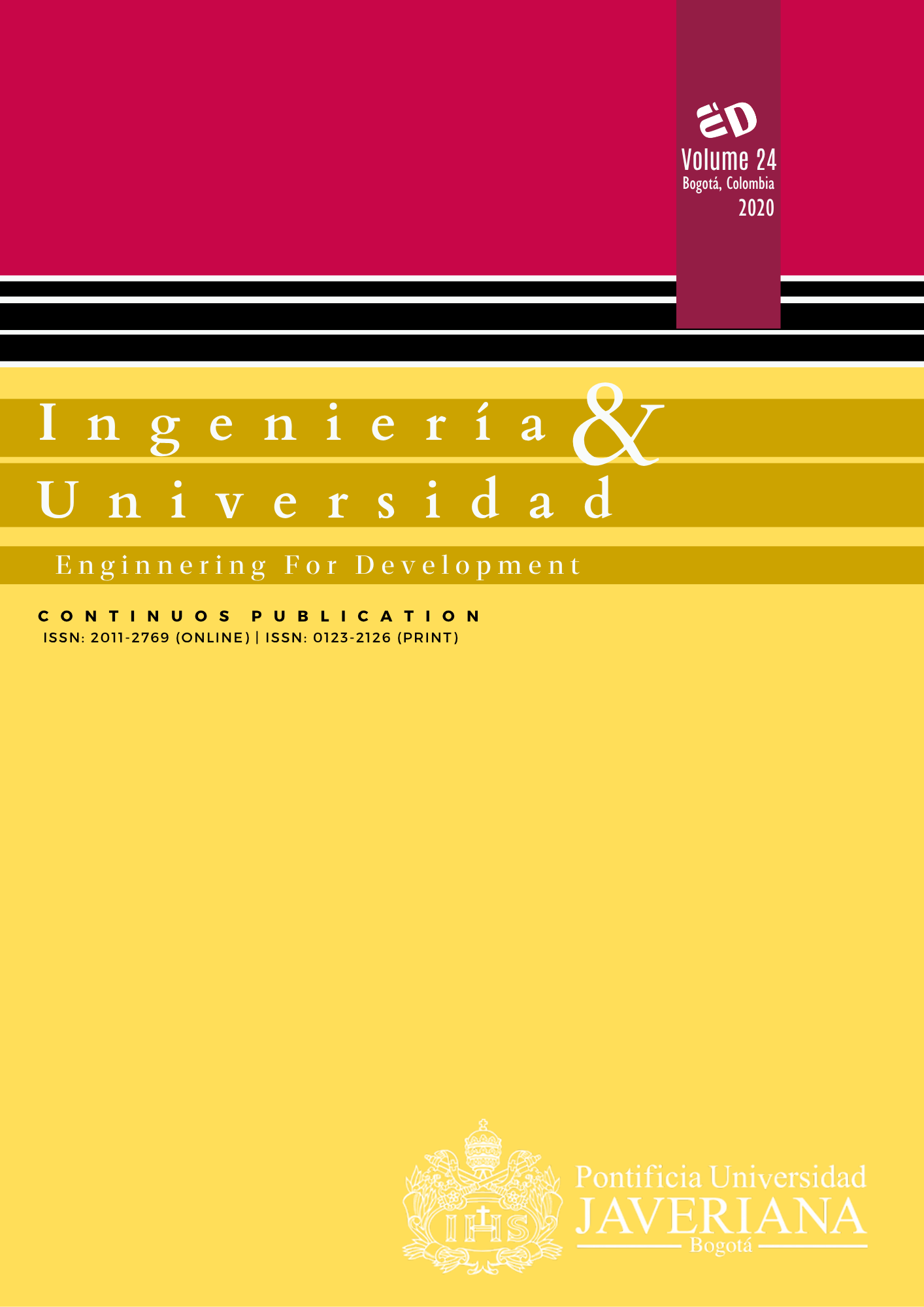Abstract
The objective of this study was to implement a pilot system of treatment wetlands, using phytoremediation as an alternative technology to remove arsenic from the concentrate of a reverse osmosis system. The pilot system was composed of two subsurface flow constructed wetlands, planted with Eleocharis macrostachya and Shoenoplectus americanus. The wetlands were fed concentrate from a reverse osmosis system for seven months, with an average flow of 962 Ld-1 and an average arsenic concentration of 0.241 mgL-1. Removal rates between 43 % and 86 % were obtained for wetland 1 and between 35 % and 79 % for wetland 2 throughout the experiment. The two plant species developed normally despite the high levels of electrical conductivity in the range of 3584 to 5455 µscm-1 in wetland intake waters. The pilot wetland system removed significant levels of arsenic from the reverse osmosis concentrate, resulting in arsenic levels in the output waters that meet Mexican standard for using water in agricultural irrigation.
Comisión Nacional del Agua (Conagua). Estadísticas del agua en México, 2017. Available: http://sina.conagua.gob.mx/publicaciones/EAM_2017.pdf.
L. F. Greenlee, D. F. Lawler, B. D. Freeman, B. Marrot, and P. Moulin, “Reverse osmosis desalination: Water sources, technology, and today’s challenges,” Water Res., vol. 43, no. 9, pp. 2317–2348, 2009. doi: 10.1016/j.watres.2009.03.010
P. Mondal, C. B. Majumder, and B. Mohanty, “Laboratory based approaches for arsenic remediation from contaminated water: Recent developments,” J. Hazard. Mater., vol. 137, no. 1, pp. 464–479, Sept. 2006. doi: 10.1016/j.jhazmat.2006.02.023
J. Bundschuh et al., “Arsenic removal from groundwater of the Chaco-Pampean Plain (Argentina) using natural geological materials as adsorbents,” J. Environ. Sci. Health., vol 46, no. 11, pp. 1297–1310, 2011. doi: 10.1080/10934529.2011.598838
S. Velizarov, J. Crespo, and M. Reis, “Removal of inorganic anions from drinking water supplies by membrane bio/processes,” Rev. Environ. Sci. Biotechnol., vol. 3, no. 4, pp. 361–380, 2004. doi: 10.1007/s11157-004-4627-9
M. Mickley, “Treatment Wetland, Desalination and Water Purification Research and Development Program Report no. 155. US Department of the Interior, Bureau of Reclamation,” 2009. Available: https://www.usbr.gov/research/dwpr/reportpdfs/report155.pdf. Accessed on: Apr. 9, 2015.
P. Xu, T. Y. Cath, A. P. Robertson, M. Reinhard, J. O. Leckie, and J. E. Drewes, “Critical review of desalination concentrate management, treatment and beneficial use,” Environ. Eng. Sci., vol. 30, no. 8, pp. 502–514. doi: 10.1089/ees.2012.0348
World Health Organization (WHO), Desalination for Safe Water Supply: Guidance for the Health and Environmental Aspects Applicable to Desalination. Geneva: Public Health and the Environment, World Health Organization, 2007.
R. K. Chakraborti, J. S. Bays, Ng. Thien, L. Balderrama, and T. Kirsch, “A pilot study of a subsurface-flow constructed wetland treating membrane concentrate produced from reclaimed water,” Water Sci. Technol., vol. 72, no. 2, pp. 260–268, 2015. doi: 10.2166/wst.2015.201
A. Pérez-González, M. Urtiaga, R. Ibáñez, and I. Ortiz, “State of the art and review on the treatment technologies of water reverse osmosis concentrates,” Water Res., vol. 46, no. 2, pp. 267–283, 2012. doi: 10.1016/j.watres.2011.10.046 PMID: 22119366
M. Chapman, F. Leitz, E. Abart, B. Boegli, and K. Linton, “The Desalting and Water Treatment Membrane Manual: A Guide to Membranes for Municipal Water Treatment,” US Bureau of Reclamation, Water Treatment Technology Program, Report no. 29, 2nd ed., Denver, CO, 1998. Available: https://www.usbr.gov/research/dwpr/reportpdfs/report029.pdf
B. van der Bruggen, L. Lejon, and C. Vandecasteele, “Reuse, treatment, and discharge of the concentrate of pressure-driven membrane processes,” Environ. Sci. Technol., vol. 37, no. 15, pp. 3733–3738, 2003. Available: https://doi.org/10.1021/es0201754
R. H. Kadlec and S. Wallace, Treatment Wetlands, 2nd ed. Boca Raton, FL: CRC, 2009.
J. M. Webb, R. Quinta, S. Papadimitriou, L. Norman, M. Rigby, D. N. Thomas, and L. Le Vay, “Halophyte filter beds for treatment of saline wastewater from aquaculture,” Water Res., vol. 46, no. 16, pp. 512–5114, 2012. doi: 10.1016/j.watres.2012.06.034
J. Bays, P. Frank, K. Ortega, “Oxnard’s Membrane Concentrate Pilot Wetlands Project,” in Proceedings 2007 Water Reuse Symposium. Tampa FL, 2007, session A-5.
CW2M HILL and Mickley and Associates, Inc., “Beneficial and Non-traditional Use of Membrane Concentrate”, Water Reuse Foundation, Project 02–006b-01, Alexandria, VA, 2006.
J. Kepke, J. Bays, and J. Lozier, “Concentrate treatment using wetlands,” Water, vol. 36, no. 7, pp. 57–63, 2009. Available: https://kestrel-inc.com/wp-content/uploads/2013/04/Water-Nov-09_Kepke4.pdf
Instituto Nacional para el Federalismo y Desarrollo Municipal (Inifed), Índice de desarrollo municipal básico, 2005. Available https://www.gob.mx/cms/uploads/attachment/file/103592/DR_0831.pdf
Instituto Nacional de Estadistica, Geografia e Informática (Inegi), “Julimes.” Available: www.inegi.org.mx/app/buscador/default.html?q=julimes#tabMCcollapse-Indicadores. Accessed on March 13, 2010.
O. G. Núñez-Montoya, “Evaluation of three native species from Chihuahua desert for use in phytoremediation,” Terra Latinoamericana, vol. 25, no. 1, pp. 35–41, 2007.
M. A. Olmos-Márquez, M. T. Alarcón-Herrera, and I. R. Martín-Domínguez, “Performance of Eleocharis macrostachya and its importance for arsenic retention in constructed wetlands,” Environ. Sci. Pollut. Res., vol. 19, no. 3, pp. 763–771, 2012. doi: 10.1007/s11356-011-0598-x
C. Corroto, A. Iriel, E. Calderón, A. Fernández-Cirelli, and A. Pérez-Carrera, “Humedales construidos utilizados para la remoción de arsénico del agua,” in Libro de Memorias IV Conferencia Panamericana de Sistemas Wetlands, 15-18 de mayo, 2018, pp. 92–95. Available: http://wetlandsconstruidos.blogspot.com/2018/11/libro-de-memorias-iv-conferencia.html?m=1
Y. Liu, Y. J. Liu, “Biosorption isotherms, kinetics and thermodynamics,” Sep. Purif. Technol., vol. 61, no. 3, pp. 229–242, 2008. doi: 10.1016/j.seppur.2007.10.002
A. Fritioff, L. Kautsky, and M. Greger, “Influence of temperature and salinity on heavy metal uptake by submersed plants,” Environ. Pollut., vol. 133, no. 2, pp. 265–274, 2005. Available: https://doi.org/10.1016/j.envpol.2004.05.036
Y. Hu and U. Schmidhalter, “Drought and salinity: A comparison of their effects on mineral nutrition of plants,” J. Plant Nutr. Soil Sci., vol. 168, 541–549, 2005. Available: https://www.semanticscholar.org/paper/Drought-and-salinity%3A-A-comparison-of-their-effects-Hu-Schmidhalter/35f390b4e2d9bcced12b32e32bb7fc6b6f61effc
T. Poulson, R. Rhodes, J. Bays, and M. Hwang, “Regulating wetlands pilot study for concentrate management,” Science and Technology Program, 2012, Report no. 3699. Available: http://www.usbr.gov/research/projects/download_product.cfm?id=520.

This work is licensed under a Creative Commons Attribution 4.0 International License.
Copyright (c) 2020 Mario Alberto Olmos-Márquez, PhD, Jesús Manuel Ochoa-Rivero, MSc, María Teresa Alarcón-Herrera, PhD, Eduardo Santellano-Estrada, PhD, José Humberto Vega-Mares, PhD, María Cecilia Valles-Alarcón, PhD



